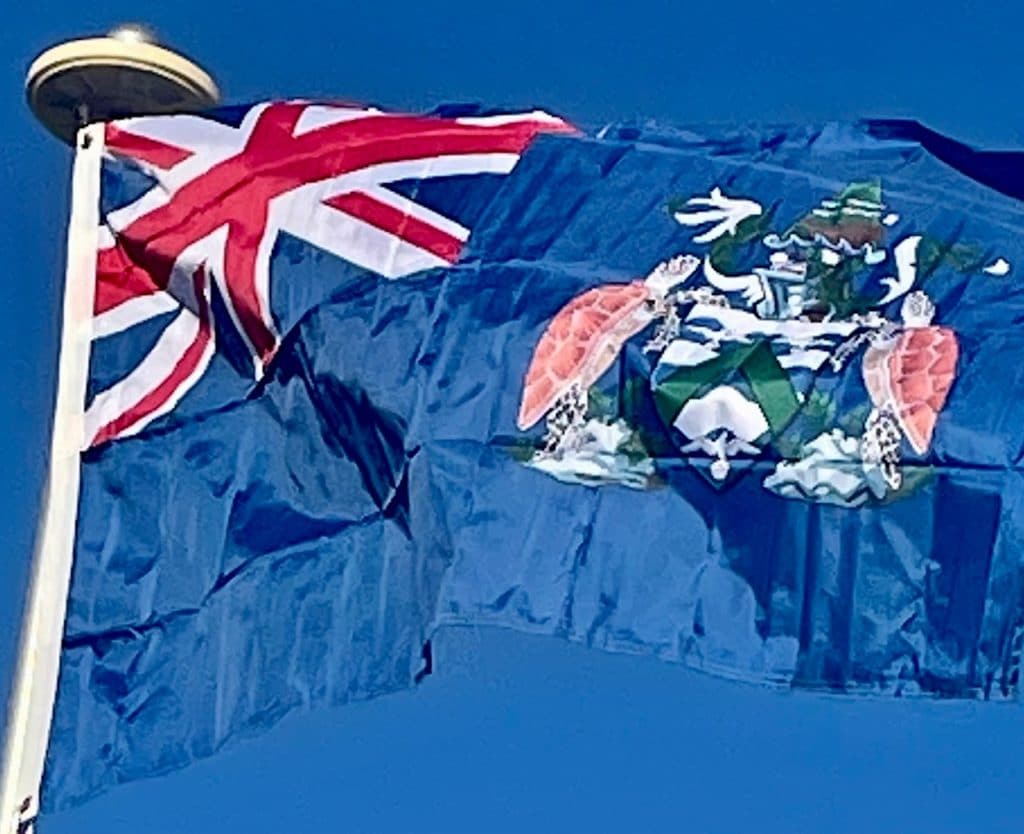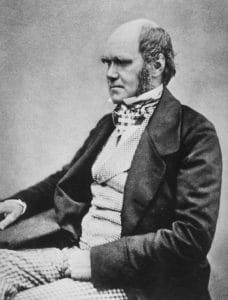

Ascension Island
The location of the island made it a useful stopping-point for ships and communications. The Royal Navy used the island as a victualling station for ships, particularly those of the West Africa Squadron working against the slave trade. A garrison of Royal Marines was based at Ascension from 1823 and Colonel Edward Nicolls became the first commandant.
Botany:
In 1836 the second Beagle voyage visited Ascension. Charles Darwin described it as an arid treeless island, with nothing growing near the coast. Sparse vegetation inland supported “about six hundred sheep, many goats, a few cows & horses,” large numbers of guineafowl imported from the Cape Verde islands, rats, mice, and land crabs; he agreed with the saying attributed to the people of St Helena that “We know we live on a rock, but the poor people at Ascension live on a cinder.” He noted the care taken to sustain “houses, gardens & fields placed near the summit of the central mountain,” and cisterns at roadsides to provide drinking water. The springs were carefully managed, “so that a single drop of water may not be lost: indeed the whole island may be compared to a huge ship kept in first-rate order.” In commenting on this, he noted René Primevère Lesson‘s remark “that the English nation alone would have thought of making the island of Ascension a productive spot; any other people would have held it as a mere fortress in the ocean.”

In 1843, botanist and explorer Joseph Hooker visited the island. Four years later, Hooker, with much encouragement from Darwin, advised the Royal Navy that with the help of Kew Gardens, they should institute a long-term plan of shipping trees to Ascension. The planted trees would capture more rain and improve the soil, allowing the barren island to become a garden. So, from 1850 and continuing year on year, ships came with an assortment of plants from botanical gardens in Argentina, Europe and South Africa. By the late 1870s Norfolk pines, eucalyptus, bamboo, and banana trees grew in profusion at the highest point of the island, Green Mountain, creating a tropical cloud forest.
Early government:
Between 1872 and 1889, the permanent population of the island was listed as HMS Flora (Tender), under the orders of the Commander-in-Chief, Cape of Good Hope. HMS Flora (1844) had been the guardship at Ascension from 1865 to 1872 before being ordered south to become the Simonstown depot ship. Five ratings died while on a recreational boat trip in 1879.
In 1899, the Eastern Telegraph Company installed the first underwater cable from the island, connecting the UK with its colonies in South Africa. In 1922, letters patent made Ascension a dependency of Saint Helena. The island was managed by the head of the Eastern Telegraph Company on the island until 1964 when the British Government appointed an Administrator to represent the Governor of Saint Helena on Ascension.
World War II:
During World War II, to supply and augment extensive amphibious aircraft antisubmarine patrol operations ongoing from the early days of the war, the United States built an airbase on Ascension Island, known as “Wideawake”, after a nearby colony of sooty terns (locally called ‘wideawake’ birds because of their loud, distinctive constant (day-and-night) cawing chatter). The airbase, which was under construction by the 38th Combat Engineer Battalion of the Army Corps of Engineers, was unexpectedly visited by two British Fairey Swordfish torpedo planes on 15 June 1942. According to one of the pilots, Peter Jinks, the planes were fired upon before being recognized as allies. The Swordfish had to land on the unfinished airstrip, thus becoming the first aircraft to land on Ascension Island proper—which had long served as an anti-submarine warfare base for Consolidated PBY Catalina flying boats. The event was commemorated with a postage stamp 15 June 1982.
